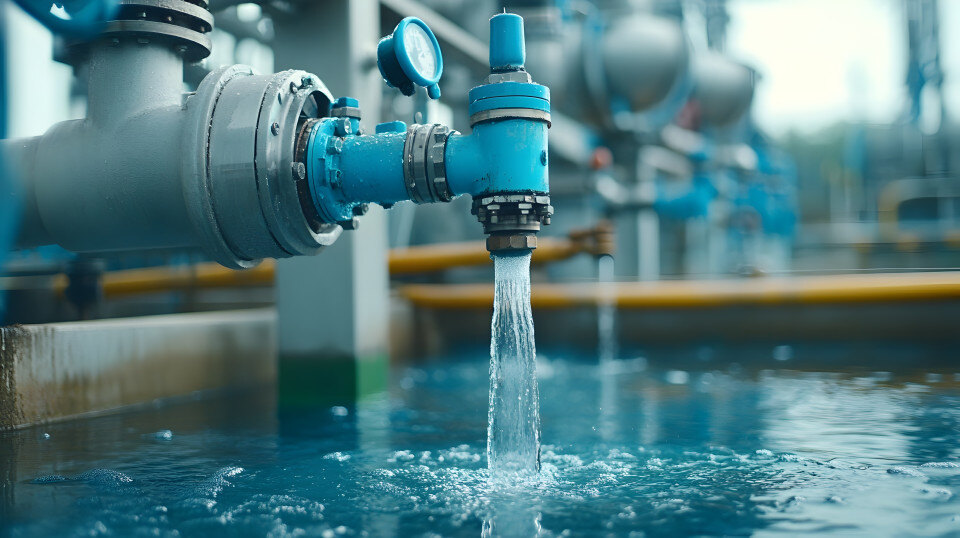Municipal water and wastewater treatment plants depend on electric motors to drive essential equipment like pumps, aerators, and other critical systems. These motors endure heavy workloads and harsh environmental conditions while operating under tight budgetary constraints.
A comprehensive preventative maintenance program significantly extends motor lifespans and minimizes downtime of these critical system parts. Applying preventative best practices reduces operational costs.
Piedmont Electric Motors offers municipalities the expertise, tools, and inventory solutions to ensure optimal motor performance and reliability. We recommend the following proactive best practices for maintaining industrial motors and parts.
Why Preventative Maintenance Matters for Municipalities
Electric motors are the backbone of municipal operations, but they are particularly vulnerable to failure due to wear, especially under challenging conditions.
Key Issues Faced by Motors in Municipal Water Environments
Some of the issues and conditions these machines may experience include:
- Harsh conditions: High humidity, corrosive chemicals, and temperature fluctuations in water and wastewater plants accelerate wear and tear.
- Heavy workloads: Continuous operation leaves little room for downtime or unscheduled repairs.
- Cost implications: A single motor failure can halt critical operations, leading to expensive emergency repairs and regulatory penalties.
Drinking water and wastewater infrastructure systems are critical aspects of a healthy environment, and their resilience is essential. The University of Texas Department of Civil Engineering evaluated over 200 publications to determine current challenges in water infrastructure.
The results of their report, Resilience in Water Infrastructures: A Review of Challenges and Adoption Strategies, reveal that climate change, aging infrastructure, lack of capital, population growth, poor maintenance, and rapid urbanization are the most frequent challenges.
Under these conditions, a proactive approach using preventative maintenance to maximize motor lifespan is common sense—and a necessity.
The Value of Preventative Maintenance
OpenGov defines preventative maintenance as “a strategic approach to maintenance that involves regular, systematic maintenance activities, including inspections, cleanings, and repairs.” The goal is to head off equipment failures before they happen. Benefits include:
- Extends motor lifespan, reducing the frequency and cost of replacements.
- Enhances energy efficiency, saving operational costs.
- Minimizes unplanned downtime, ensuring uninterrupted service to communities.
Preventative maintenance can cut costs by up to 18% while generating a 400% return on investment. Every dollar spent on preventive or predictive maintenance can save up to five in unplanned expenses.
Municipal Water Supply: Components of a Preventative Motor Maintenance Program
Municipalities can implement these best practices to avoid unexpected motor failures:
- Regular Inspections: Conduct visual inspections to identify wear, corrosion, and contamination. Use thermal imaging to detect overheating or misalignment.
- Routine Greasing and Lubrication: Follow manufacturer guidelines. Adjust schedules for harsh environments. Avoid mixing incompatible greases.
- Load Monitoring: Use voltmeters and ammeters to prevent overloading. Address issues promptly to avoid failure.
- Electrical Testing: Use a megger to test insulation resistance. Perform periodic tests to monitor trends and catch issues early.
Challenges in Municipal Motor Maintenance in Water Plants
Municipalities face unique challenges, often requiring tailored solutions to maintain performance.
Environmental factors, especially in water and wastewater plants, include high moisture, corrosive elements, and dust—all contributing to accelerated wear and inefficiency. Specialized maintenance practices are necessary to mitigate these effects.

According to the EPA, “water utilities face challenges in recruiting, training, and retaining employees," with one-third of the workforce eligible to retire in the next decade. Limited personnel make prioritization and strategy crucial.
Aging infrastructure compounds the issue. Older motors need more frequent repairs, and sourcing parts can be time-consuming and expensive. Innovative solutions are essential for municipalities on tight budgets.
How Piedmont Electric Motors Supports Municipalities
Piedmont offers services that help municipalities overcome maintenance challenges. With access to a wide inventory of motor lines, municipalities can quickly source replacements without keeping large inventories. Piedmont repairs motors up to 4,000 HP, often exceeding factory specs with advanced diagnostics and materials.
The company also provides consulting services, helping optimize operations. Their team advises on motor selection, maintenance schedules, and environmental adaptations—like installing ventilation or offering corrosion-resistant housings and custom systems.
In emergencies, Piedmont provides fast repair or replacement turnaround, minimizing downtime and helping municipalities manage supply chain delays.
Balancing Repair vs. Replace
Municipalities must decide whether to repair or replace motors. Repair is usually best when the structure is intact and costs are under 50% of replacement. During supply chain delays, repairs are essential. However, replacement may be necessary for severely damaged units or when efficiency/compliance upgrades are required.
Piedmont helps assess these choices with expert evaluations. Their upgrades often improve motor performance beyond factory specs—an economical and reliable option when new parts are unavailable.
Ensuring Compliance and Operational Excellence
Municipalities must meet strict safety and environmental regulations. OSHA mandates regular inspections, and environmental laws often require special materials to reduce emissions and discharge.
Piedmont helps ensure compliance through inspections, reporting, and environmentally safe materials, all while maximizing operational efficiency.
6 Steps for Implementing Preventative Maintenance Programs
Municipalities can take the following steps to build an effective program:
- Schedule regular maintenance.
- Develop inspection, greasing, and testing schedules tailored to each motor and environment.
- Invest in diagnostics or partner with providers that offer them.
- Use tools like multimeters, Meggers, and thermal imagers to detect early issues.
- Partner with experts like Piedmont Electric Motors for services and guidance.
- Maintain detailed records of all maintenance activities for compliance and future reference.
Conclusion and Next Steps
Preventative maintenance is essential to extend motor life, reduce costs, and prevent operational disruptions.
With Piedmont’s expert support, municipalities can develop effective programs and maintain service reliability. Partnering with Piedmont Electric Motors gives access to reliable solutions, full support, and the tools needed to optimize motor performance.
Contact us to see how we can help maintain the motors and pumps critical to your municipal water and wastewater systems.